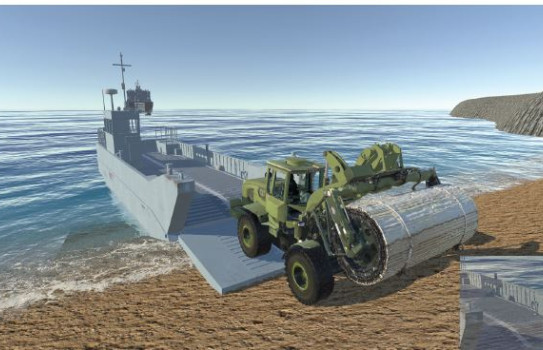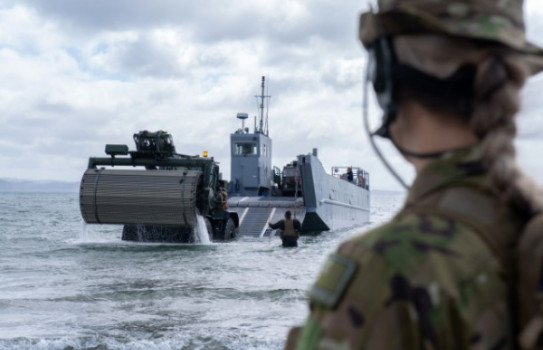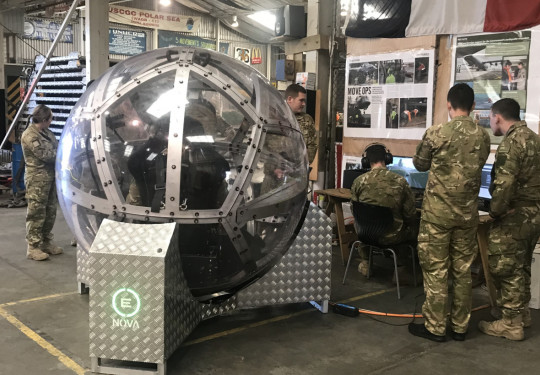Driving simulation technology
Cutting-edge technology is being trialled by the Army to help improve driver safety, save money and be more sustainable.
29 September, 2021
The NOVA is an untethered full motion simulator giving 360 degrees of motion created by a Lower Hutt company. The Emerging Technology Group has been working with Eight360 alongside 5 Mov Coy and 10 Tpt Coy to investigate its utility in driving simulation.
“when coupled with a virtual reality headset the NOVA gives a fully immersive experience of a driving scenario. The NOVA platform allows the NZDF to use technology to enable more flexibility in the way personnel can become familiar with various military vehicles and driving scenarios.” - Emerging Technology Director, Mark Baddeley
This flexibility means Army personnel can practise driving some of the larger and most expensive equipment with no risk to either themselves or the vehicles.
This is especially useful when it is hard to replicate a complex environment such as an amphibious landing. The initial exploration involved the “wet gap transition” in an amphibious landing operation. This comprised of testing vehicles moving from HMNZS Canterbury onto a landing craft and then onto a beach. The simulation of the ramp angles involved, the associated movement of the vessels and the incorporation of a guide with associated communication via hand gestures created an environment providing a realistic experience of the transition.

A NZDF Landing Craft (Mechanised) in driving simulator
The CAT938K vehicle is especially difficult to handle in this scenario as the driver is required to reverse the vehicle without visibility, relying on guides to help them navigate the wet gap. The Canterbury stern ramp can be up to 15 degrees, and the LCM ramp can be up to 28 degrees. Both actions can take a bit of getting used to for the drivers as the centre of gravity of the vehicles change, especially with the added complexity of changing sea state.

An NZDF Landing Craft (Mechanised) makes its way to shore during an NZDF exercise
The Officer Commanding 5 Mov Coy, at the time, Major Pete Van der Vlerk’s prime motivation was to reduce risk by giving the drivers an experience that replicates the most dangerous aspects of the exercise. The use of simulation will not necessarily reduce the need to train with the real vehicles in the real scenarios but supplement the training programme and help increase confidence and experience.
The opportunity to train in this scenario is limited and can be cancelled or postponed for numerous reasons as it requires the coordinated availability of personnel, vehicles, ships, landing craft, weather conditions and the beach itself.
The NOVA platform can also simulate the scenario in different sea states whilst in a safe environment, which benefits the operator before they encounter a potentially hazardous real situation.
“A simulator also means different driving situations can be replicated and practised regularly without the added burden on the physical vehicles – improving sustainability as well as real costs in terms of wear and tear on the vehicles and fuel savings,” said Mr Baddeley.
A small six-week window of opportunity existed last year to create the scenario and get the necessary operating permit to enable safe trialling prior to Exercise Joint Waka 2020. The content to create the simulation was split into two parts – the creation of a virtual vehicle and the virtual environment that the vehicle is required to navigate. Creating the virtual vehicle involved taking approximately 1,500 photos of the CAT938K to make a digital model, building customisable controllers that match the physical controls, such as steering wheel and pedals, and using sensors to capture the feeling of driving the vehicle in real life along with configuring the virtual vehicle with the nuances of the CAT938K.
